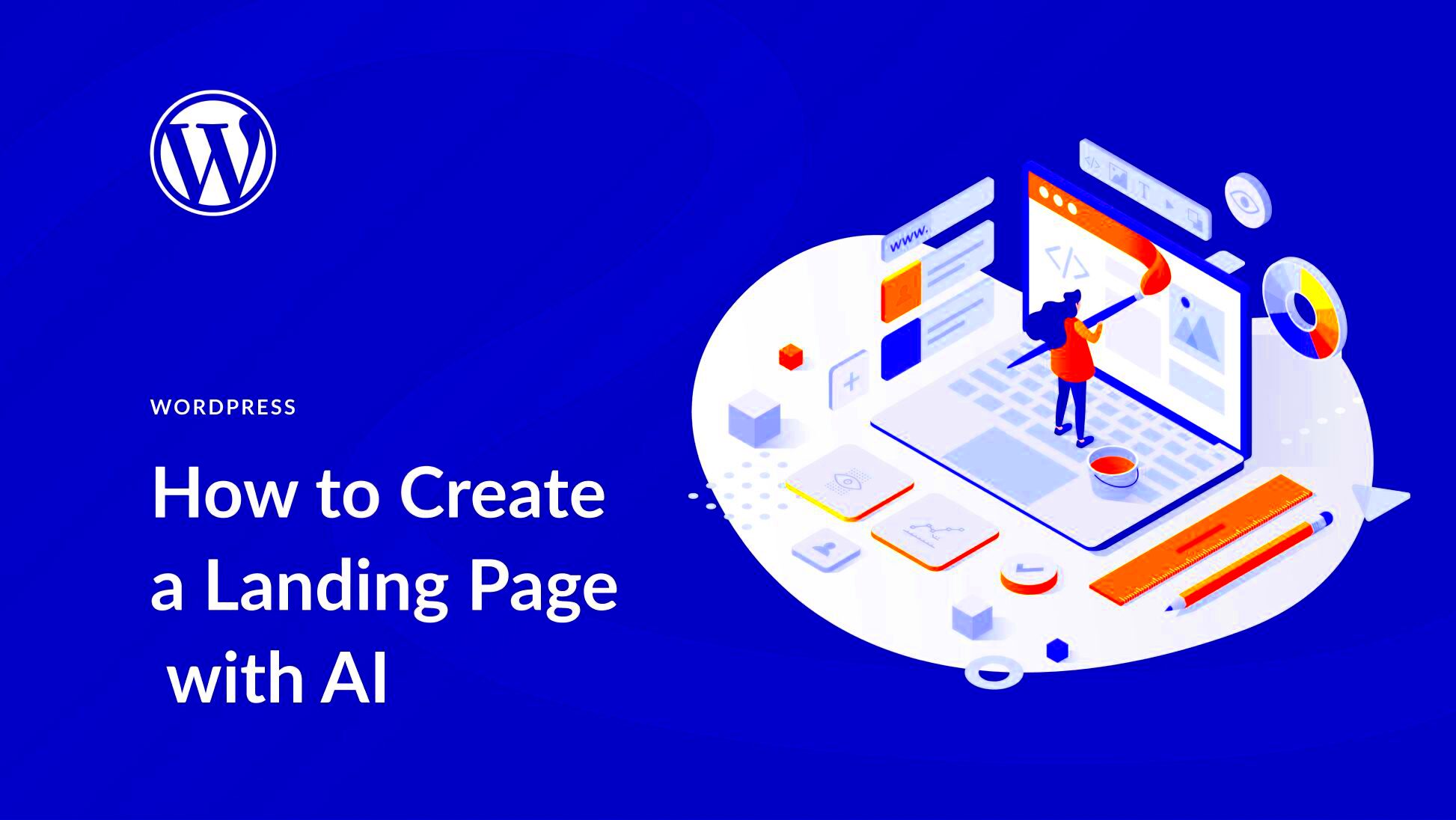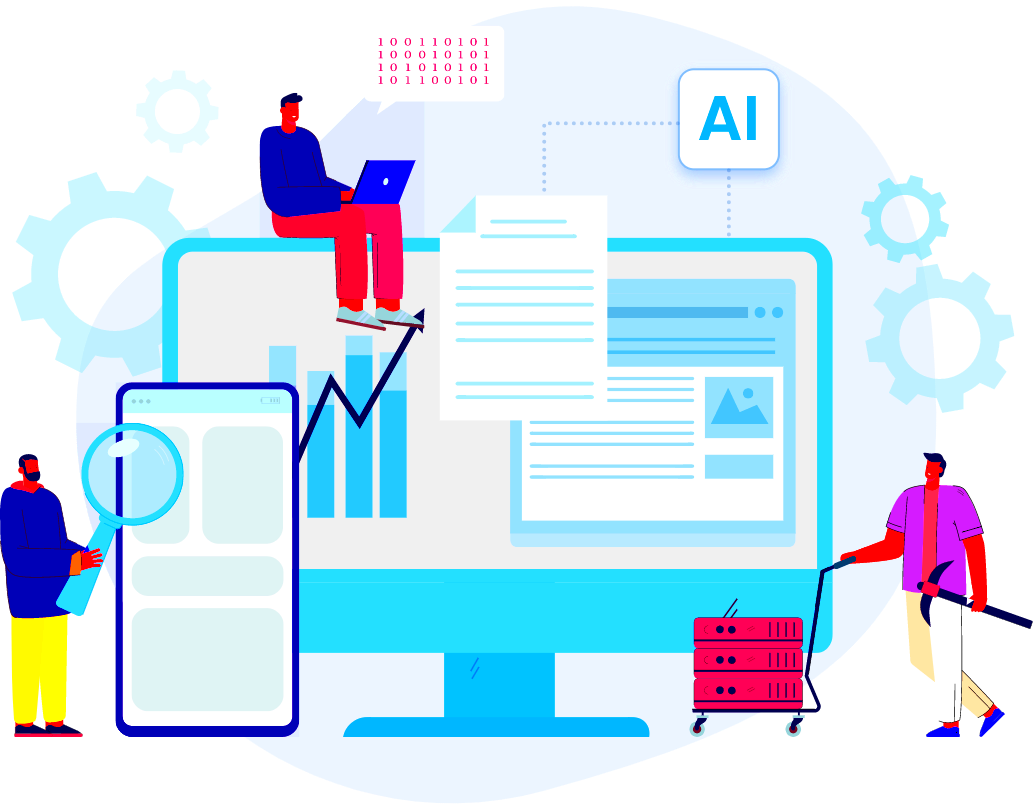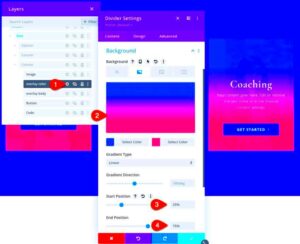In today’s digital landscape, capturing a user’s attention within seconds is crucial, and that’s where landing pages come into play. The rise of Artificial Intelligence (AI) has opened up new possibilities for designing these pages swiftly and efficiently. AI-generated landing pages not only streamline the design process but also enhance the user experience by utilizing data-driven insights. Buckle up, as we dive into the exciting realm of AI-generated landing pages and explore how they can elevate your WordPress site.
Benefits of Using AI for WordPress Landing Pages

When it comes to crafting landing pages, leveraging AI tools can provide numerous advantages that traditional methods may struggle to match. Here are some compelling benefits:
- Time Efficiency: AI can significantly reduce the time needed to create landing pages. Instead of spending hours designing and refining layouts, AI tools can generate prototypes instantly.
- Data-Driven Design: AI algorithms analyze vast amounts of data to understand user behavior and preferences. This ensures that the landing pages are tailored to meet the target audience’s needs effectively.
- Cost-Effective Solutions: Hiring professional designers can be expensive. AI-generated pages can provide high-quality designs at a fraction of the cost, making it accessible for small businesses and startups.
- A/B Testing Made Easy: Many AI tools come with built-in A/B testing features. You can swiftly test different versions of your landing pages to see what resonates most with visitors.
- Consistency and Scalability: Using AI ensures that your branding remains consistent across all landing pages. Plus, it makes scaling up your marketing efforts easier since you can generate multiple landing pages quickly.
In conclusion, the incorporation of AI in designing WordPress landing pages not only speeds up the process but also enhances the quality, allowing you to connect better with your audience. So, why not embrace the future of design and see the difference it can make for your online presence?
Popular AI Tools for Landing Page Design

When it comes to designing engaging landing pages, leveraging AI tools can make a world of difference. These tools simplify the process, allowing both beginners and seasoned designers to create eye-catching pages without needing extensive technical skills. Let’s dive into some popular AI tools that can help you craft the perfect landing page:
- Unbounce: A leader in landing page creation, Unbounce features AI-driven templates that adapt to your content needs. Its Smart Traffic feature uses AI to determine which variant of your page performs best based on user preferences.
- Leadpages: This tool provides you with an intuitive drag-and-drop interface for creating stunning landing pages. With AI, it offers personalized recommendations to help improve your designs and conversion rates.
- Instapage: Known for its powerful editing suite, Instapage uses AI to analyze user behavior and suggest enhancements to your designs. The collaboration features are perfect for teams working together.
- Fotor: This AI-powered online design tool not only assists in generating stunning graphics but also aids in structuring landing pages. Its templates are specifically crafted for high conversion.
- Pageflow: A simple-to-use AI tool that guides users step-by-step in creating landing pages. It optimizes the design based on established best practices, saving you the trouble of guessing.
These AI tools not only streamline the design process but also provide insightful analytics to help you refine your pages over time. Whether you’re aiming to boost your marketing efforts or increase sign-ups, these tools have got you covered!
Step-by-Step Guide to Creating a Landing Page with AI
Ready to create a compelling landing page using AI? Don’t worry; it’s easier than you might think! Here’s a step-by-step guide to get you started:
- Choose Your AI Tool: First, pick one of the AI tools mentioned earlier. Consider your specific needs and the features that will best serve your purpose.
- Select a Template: Most AI tools offer a variety of pre-built templates. Choose one that resonates with your brand. Make sure it aligns with the goals of your landing page.
- Customize Your Content: Personalize the template by adding your unique text, images, and videos. Tools like Unbounce can help refine your headlines for maximum impact.
- Utilize AI Features: Take advantage of AI suggestions. For instance, tools like Leadpages can recommend layout adjustments to improve engagement based on best practices.
- Optimize for Mobile: Ensure your landing page is mobile-friendly. Most AI tools will preview how your design looks on different devices — make adjustments if necessary.
- Implement Tracking Analytics: Don’t forget to set up tracking benchmarks using the built-in analytics features. Keep an eye on performance indicators such as conversion rates and bounce rates.
- Test and Refine: Test your landing page before launching. Use A/B testing tools to see which elements perform better and make adjustments based on the data collected.
Following these steps can lead to a beautifully designed and highly effective landing page. With AI at your disposal, the process of crafting a standout page is not only easier but also more efficient in meeting your marketing needs!
Best Practices for Designing Effective Landing Pages
Creating an effective landing page is not just about aesthetics; it’s about functionality, clarity, and driving conversions. When you design a landing page, keep these best practices in mind:
- Clear and Compelling Headlines: Your headline is the first thing visitors see. Make it catchy and relevant to immediately grab their attention.
- Simplified Layout: Avoid clutter. A clean, organized layout will help guide visitors towards the desired action. Use plenty of white space to create a relaxed feeling.
- Focused Call-to-Action (CTA): Your CTA should be loud and proud! Make it stand out by using contrasting colors. Use action-oriented language like “Get Started” or “Sign Up Today” to encourage clicks.
- Supporting Visuals: Incorporate images or videos that complement your text. Visuals can quickly convey what words might take longer to explain.
- Mobile Optimization: With an increasing number of users browsing on mobile devices, ensure your landing page is mobile-responsive. Check how it looks on different screen sizes!
- Social Proof: Show potential customers that others trust you. Include testimonials, reviews, or trust badges to build credibility.
- Testing and Analytics: Use A/B testing to compare different versions of your landing page. Analyze which elements work best for converting visitors into leads or customers.
By adhering to these best practices, you’ll be better equipped to create a landing page that not only attracts visitors but also converts them into loyal customers.
Customizing Your AI-Generated Landing Pages
Using AI generators to create landing pages can save you tons of time, but customization is key to making these pages truly yours. Here are some effective strategies for personalizing your AI-generated landing pages:
- Edit Your Content: AI might provide a solid foundation, but it’s essential to infuse your brand’s voice and personality into the content. Edit headlines, body text, and CTAs to reflect your unique style.
- Incorporate Branding Elements: Ensure your landing page aligns with your overall brand. Use your brand colors, typography, and logo to create familiarity and trust among your users.
- Tailor Visuals: Choose or create images and videos that resonate with your target audience. Platforms like Canva can help you design visuals that fit your brand perfectly.
- Localized Messaging: If your audience is diversified, consider creating variations of your landing page tailored to specific regions or demographics. Personalization helps resonate more deeply with your visitors.
- Integrate Tools: Connect your landing page to analytics and marketing tools (like Google Analytics or email marketing platforms) directly. This can help you track performance efficiently.
- User Feedback: After launching your AI-generated page, gather feedback. Whether through surveys or user testing, knowing what your visitors think can guide your customization efforts.
By customizing your AI-generated landing pages, you’ll ensure they not only look good but also resonate with your audience, ultimately leading to increased engagement and conversions.
Integrating SEO Best Practices with AI Tools
When it comes to designing WordPress landing pages, integrating SEO best practices is crucial. But how can we effectively marry these practices with the power of AI? It turns out, AI tools can significantly enhance our SEO efforts, streamlining the process and optimizing for better results. Below, we’ll break down how to make this integration work for you.
- Keyword Research: AI tools can analyze search trends and suggest relevant keywords that resonate with your target audience. Incorporate these keywords naturally into your content for better ranking.
- Content Generation: Utilizing AI can help you create engaging, SEO-friendly content that appeals to both search engines and users. These tools can suggest content structures and even generate article ideas based on user behavior.
- Meta Tags Optimization: Meta titles and descriptions play a crucial role in how search engines perceive your pages. Some AI tools offer suggestions tailored to your content, maximizing click-through rates.
- Site Speed Improvement: AI can analyze your website’s performance and suggest optimizations that can improve loading times—a critical factor for both SEO and user experience.
- On-Page SEO Audits: AI can conduct audits of your landing pages to identify missed opportunities, such as broken links or missing alt tags, helping you to refine your pages effectively.
By incorporating these AI-driven strategies into your WordPress landing page design, you’ll not only enhance your content but also improve your visibility on search engines. In today’s competitive landscape, that’s a win-win!
Case Studies: Successful AI-Designed Landing Pages
If you’re wondering whether AI-designed landing pages can actually be successful, look no further than these compelling case studies. These examples demonstrate the potential of AI in creating high-performing landing pages that convert visitors into customers.
| Company | AI Tool Used | Outcome |
|---|---|---|
| FitGenie | Designify | Increased conversion rate by 35% in three months through personalized layouts. |
| EduSmart | Copy.ai | Improved lead generation by 50% with AI-generated persuasive content. |
| TravelNow | WordLift | Boosted organic traffic by 70% after optimizing SEO elements with AI. |
These cases illustrate that leveraging AI tools not only helps in crafting visually appealing landing pages, but also enhances functionality and user engagement. Each of these companies has seen significant improvements in conversion rates and organic traffic, proving the value of marrying AI technology with landing page design.
So, if you’re considering deploying AI tools in your landing page designs, just remember these success stories. With careful implementation, those impressive metrics could be just around the corner!
Common Pitfalls and How to Avoid Them
Designing WordPress landing pages can be a smooth ride with AI generators, but there are a few common pitfalls that you’ll want to steer clear of to ensure your success. Let’s break down some of these potential missteps.
- Overloading Your Page with Content: One of the biggest mistakes is cramming too much information onto your landing page. While it might be tempting to provide every detail, keep in mind that less is often more. Aim for clear, concise content that effectively communicates your message.
- Ignoring Your Audience: Tailoring your content based on your target audience is crucial. Not doing so can lead to a disconnect. Use AI tools that help analyze visitor behavior and preferences to design a page that resonates with them.
- Neglecting A/B Testing: Just because your AI tool recommends a design, it doesn’t mean it’s the best option. Run A/B tests to compare different layouts, headlines, and images. This can provide invaluable insights into what actually works.
- Forgetting Mobile Optimization: Many users access websites via mobile devices. If your landing page isn’t optimized for mobile, you may lose potential customers. Always check how your design looks on different screen sizes.
- Using Low-Quality Images: Visual appeal matters! Avoid using pixelated or generic images. Invest in high-quality visuals that align with your brand’s identity.
By keeping these pitfalls in mind, you’ll not only enhance the effectiveness of your landing pages but also make the most out of AI generators in your web design process.
Conclusion: The Future of AI in Web Design
As we look toward the future, it’s clear that AI will continue to revolutionize web design, especially with WordPress landing pages. The accessibility and capability of AI generators are improving rapidly, making it easier for businesses and individuals to create stunning, effective designs without the need for extensive coding skills.
Here are some trends and possibilities that could shape this future:
| Trend | Description |
|---|---|
| Personalization | AI can analyze visitor data to customize landing pages in real time, offering a tailored experience that boosts conversions. |
| Improved User Experience | With features like chatbots and intelligent customer support, AI can help guide visitors through the decision-making process. |
| Data-Driven Insights | AI generators can provide in-depth analytics, helping you make informed decisions about design strategies and user engagement. |
| Efficient Design Processes | AI tools will continue to streamline the design process, allowing for quicker iterations and adaptations to current trends. |
In summary, the integration of AI in web design is not just a trend; it’s the future. By embracing these technologies, you unlock endless possibilities for creativity, efficiency, and effectiveness in your WordPress landing pages. So, keep an eye on the horizon—exciting advancements are just around the corner!



